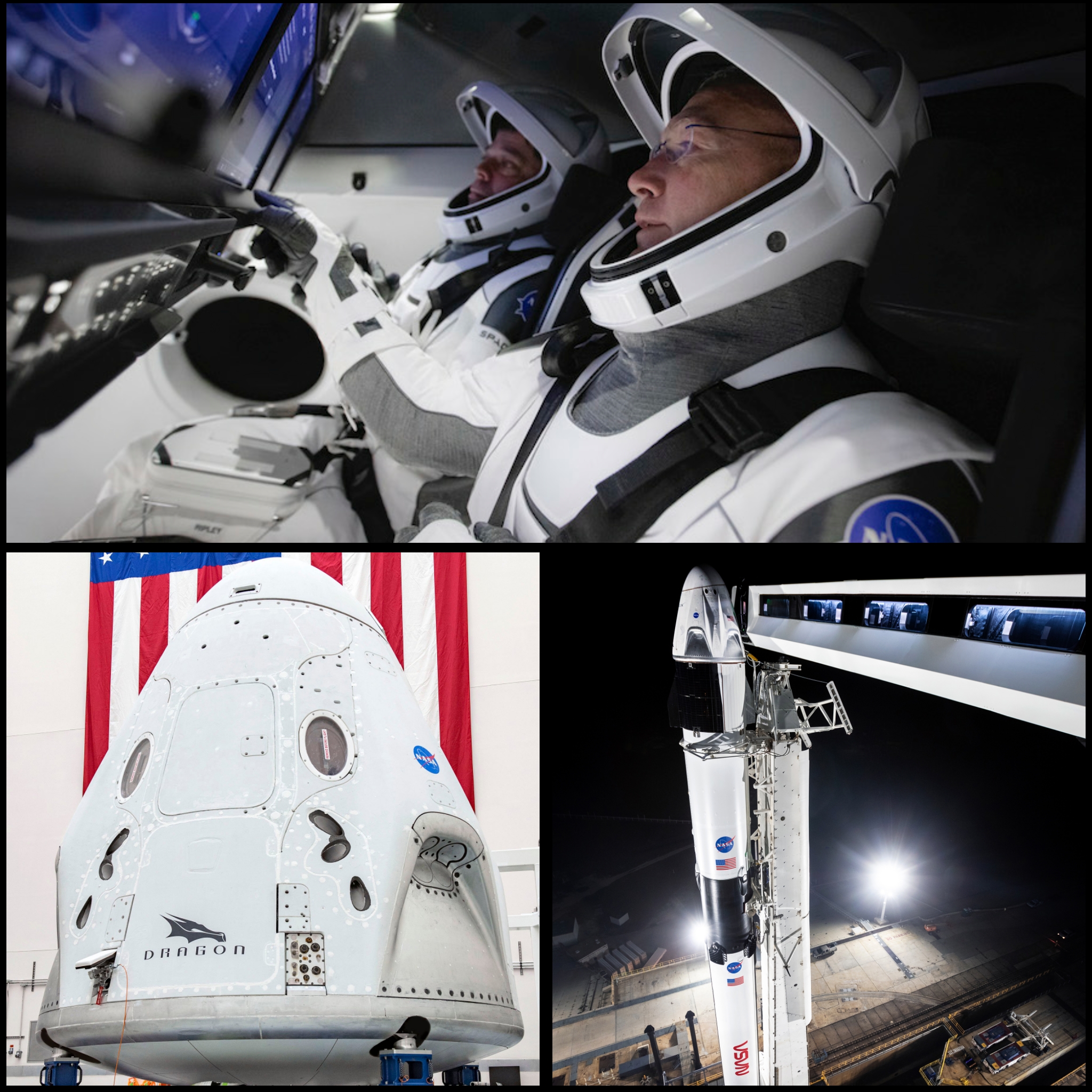
The man who piloted the final Space Shuttle mission and a former chief of NASA’s astronaut corps are ready to buckle aboard a Crew Dragon later this month to begin the first space voyage by U.S. citizens in a U.S.-built spacecraft, launched atop a U.S.-built rocket, and from U.S. soil, in almost nine years. Retired Marine Corps Col. Doug Hurley and Air Force Col. Bob Behnken—both of whom are also married to fellow astronauts—will rise from historic Pad 39A at the Kennedy Space Center (KSC) in Florida no earlier than 4:32 p.m. EDT Wednesday, 27 May.
NASA’s desire to keep the International Space Station (ISS) at a reduced crew of three for as short a period as possible led to plans to extend Hurley and Behnken’s flight to a longer duration. Its exact length has yet to be determined, although the specific Crew Dragon being used for the so-called “Demo-2” mission can remain aloft for up to 120 days, producing a return to Earth as late as the August-September timeframe.
Hurley and Behnken, of course, have been in generic training for the Commercial Crew Program (CCP) since July 2015 and began dedicated mission-specific training for the first Crew Dragon test flight following a star-studded NASA ceremony in August 2018. Their voyage, known as “Demo-2”, was expected to follow last March’s highly successful uncrewed Demo-1 test flight to the space station, but a number of issues—including an explosion of SuperDraco thrusters during a subsequent ground test, which destroyed the Demo-1 capsule, and a need to complete testing of SpaceX’s upgraded Mark 3 parachutes—forced a lengthy delay into the late spring of 2020. And with last month’s return of the Expedition 62 crew, only Expedition 63 Commander Chris Cassidy is currently aboard the U.S. “side” of the station.
The arrival of Hurley and Behnken will increase Expedition 63 to five members, counting Russian cosmonauts Anatoli Ivanishin and Ivan Vagner, and will noticeably reduce the amount of time that the ISS is on a reduced crew complement. It also seems increasingly likely, as Behnken alluded in a Friday afternoon news conference, that the Demo-2 astronauts may participate in a series of complex spacewalks this summer to install new batteries into the station’s S-6 truss and activate new hardware on Europe’s Columbus lab. Significantly, the Demo-2 crew will retrieve U.S. flags flown on the first and the last shuttle missions and bring them back home. But neither Hurley or Behnken have any plans yet about whether the flag transfer will form part of a broad ceremony. “We will probably grab it from Chris,” said Behnken, “and put it in a safe place on Space Station” for the rest of the mission, before bringing it back to Earth.
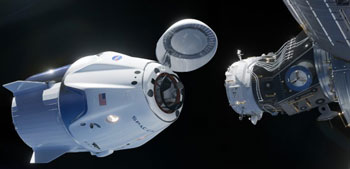
Speaking Friday, NASA Demo-2 Flight Director Zeb Scoville likened this mission to “getting the World Series, the Stanley Cup [and] the Superbowl, all rolled into one”. Hurley and Behnken’s initial launch profile will visually appear not dissimilar to a cargo Dragon ascent, their Falcon 9 booster powering them uphill and its first stage landing a few minutes thereafter on the Autonomous Spaceport Drone Ship (ASDS), nicknamed “Of Course I Still Love You”, offshore in the Atlantic Ocean. In the event of a launch scrub on 27 May, the next attempt will occur “a few days later”, in order to preserve the possibility of a Flight Day Two docking with the space station.
However, as detailed by Benji Reed, SpaceX Director of Crew Mission Management, addressing weather concerns and Launch Commit Criteria (LCC) for Demo-2 will be somewhat different from cargo Dragon missions. This is chiefly due to the need to monitor the weather “along the track” in the event that Demo-2 needs to perform a contingency return at any stage of its mission. As such, Mr. Reed noted that there exists a “very high chance of a scrub due to weather”.
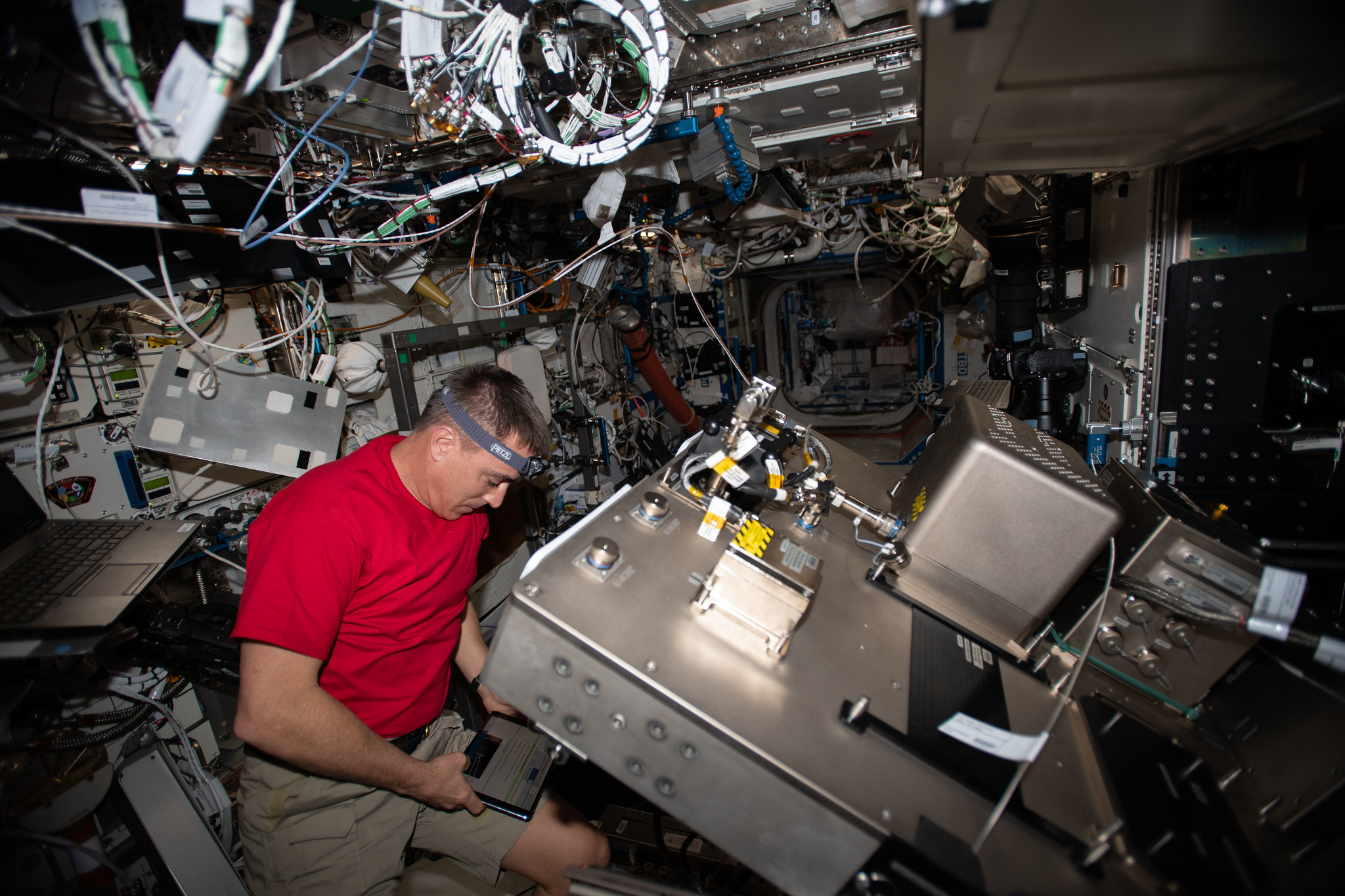
Having flown four previous Space Shuttle missions between them, Hurley and Behnken anticipate launching atop a Falcon 9 to be quite distinct from their past experience. They noted that audio sensors were installed aboard last year’s Demo-1 capsule and were recently combined with video from both that mission and from January’s In-Flight Abort Test to afford the astronauts a clearer set of “cues” of what they can expect during liftoff and ascent. “We’re expecting a smooth ride,” said Behnken, “but we’re expecting a loud ride!” Returning to Earth in the summer, conversely, will mark the first ocean splashdown of a U.S. crew since Tom Stafford, Vance Brand and Deke Slayton at the end of the Apollo-Soyuz Test Project (ASTP) in July 1975, which Behnken expects to be softer than a Soyuz ground landing but somewhat harder than a shuttle runway landing.
Following orbit insertion, Hurley and Behnken will kick off a 27-hour journey to the space station, punctuated by a series of tests of their spacecraft systems, controls and habitability. Early 28 May, the Crew Dragon will maneuver itself to fly radially around the so-called “V-Bar”—along the station’s velocity vector—before the crew conducts a manual test at 500 feet (150 meters) and gains some valuable “stick time” to simulate a failure of the docking mechanism. The Crew Dragon will then be placed back into its automated regime, approaching to a hold-point at 65 feet (20 meters), where it will await final “Go/No-Go” checks. Following approval to proceed, the spacecraft will dock at the International Docking Adapter (IDA)-2 interface, at the forward end of the station’s Harmony node.

The length of Hurley and Behnken’s mission remains open-ended, with NASA Commercial Crew Deputy Program Manager Steve Stich pointing out that the minimum duration is “about a month” and the maximum is capped at around 119 days. He explained that the decision to extend the Demo-2 was made about six months ago in response to a need to “augment the capability of Space Station”.
The life-limiting point hinges upon Crew Dragon’s solar array cells, which degrade noticeably over time, due to the effect of harsh atomic oxygen in the upper reaches of the “sensible” atmosphere. The “thicker” nature of the cells allows Crew Dragon to possibly get up to 119 days of power-generating capability on Demo-2, although the exact performance profile will be monitored throughout the mission.
“We don’t see any other life-limiters,” said Mr. Stich, adding that future “operational” Crew Dragons—the first of which will fly later this year with NASA astronauts Mike Hopkins, Victor Glover and Shannon Walker, together with the Japan Aerospace Exploration Agency (JAXA)’s Soichi Noguchi—are capable of up to 210 days aloft.
A final launch rehearsal involving both NASA and SpaceX teams is due Monday, 4 May, with a customary Static Fire Test of the nine Merlin 1D+ first-stage engines of the Falcon 9 targeted at Pad 39A in the days before launch. A Crew Dry Dress Rehearsal will also take place during this period, requiring Hurley and Behnken to suit-up, head out to the pad and enter the spacecraft, close the hatch and proceed through countdown milestones. This will allow the team to iron out any final obstacles before 27 May.
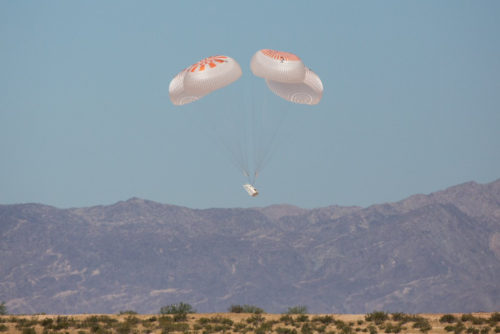
Notwithstanding last April’s SuperDraco failure and the destruction of the Demo-1 capsule, significant progress has happened in recent months, although Mr. Reed remains “very appropriately nervous” ahead of Hurley and Behnken’s launch. All told, he explained that more than 700 SuperDraco tests have been conducted to date, together with the successful completion on Friday, 1 May, of the 27th test of the upgraded Mark III parachutes for Crew Dragon. Added to that tally, a Pad Abort Test of Crew Dragon took place in May 2015 and a dramatic In-Flight Abort Test last January. Mr. Reed described the In-Flight Abort Test as “one of the most complex engineering tests ever done”. Yet aside from those tests, SpaceX President Gwynne Shotwell—another remote panelist in yesterday’s group of press conferences—is keenly aware that, for the first time in their history, her team will be flying humans into space. As such, it became vital for SpaceX to get to know Hurley and Behnken “as astronauts, as test pilots, badass…but dads and husbands; I wanted to bring some humanity to this deeply technical effort”.
Whenever their mission does come to an end, Hurley and Behnken are expected to undock autonomously from the ISS and complete a two-day period of “free flight”, before executing a re-entry and splashdown in the Atlantic Ocean. The astronauts are expected to be recovered by a SpaceX vessel within an hour of hitting the water.
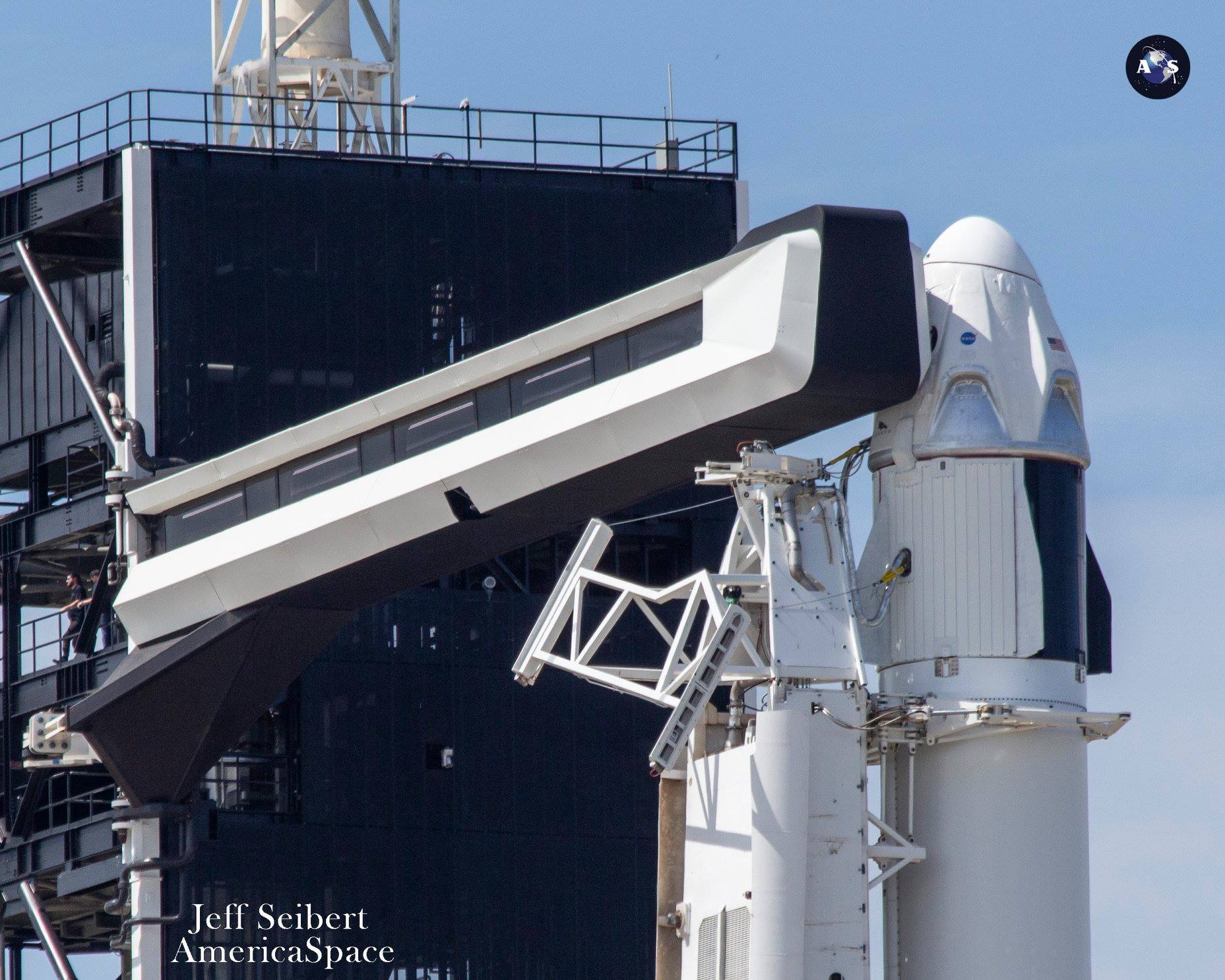
It remains to be exactly how future U.S. and Russian crew members will be transported to and from the space station, with NASA Administrator Jim Bridenstine explaining that a contract to fly an astronaut on October’s Soyuz MS-17 mission—probably shuttle veteran and seasoned spacewalker Steve Bowen—is expected to be completed within the next few days.
And although former ISS resident Kate Rubins has been unofficially penciled-in to fly Soyuz MS-18 next year, alongside two cosmonauts, Mr. Bridenstine was non-committal on how many future U.S. astronauts will fly aboard Russian vehicles. However, he suspects that it will take the form of a “non-exchange-of-funds relationship, where we trade” seats.
As Launch Month dawns and America stands only three weeks away from returning U.S. astronauts to space, aboard U.S. spacecraft, atop U.S. rockets, and from U.S. soil, for the first time since the end of the Space Shuttle Program, Mr. Bridenstine seemed visibly upset that KSC cannot welcome large crowds to observe this most historic of missions.
“We are asking people to watch from home,” he said, in reference to the continuing worldwide march of the COVID-19 coronavirus. He noted KSC’s historic nature was one of always welcoming people to the space agency’s premier launch facility. “We’re asking people not to travel to the Kennedy Space Center,” he said. “And that makes me sad to even say it. Boy, I wish we could make this into something spectacular.” But he stressed that “now is not the time” for having hundreds of thousands of people descend on KSC and to do the Demo-2 launch campaign “in a way that’s responsible”.
In a report by Florida Today however, the local Sheriff is encouraging the public to come out and witness space history being made.
.
.
FOLLOW AmericaSpace on Facebook and Twitter!
.
.
Missions » ISS » CCDev » DM-2 »



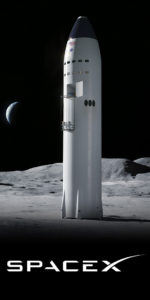
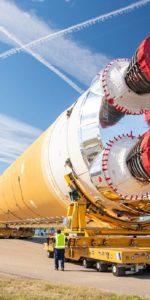
isn’t it about time or past time we should never ended one program before we have another replacement in place for the out going program but that govt and our political leaders if thats what they are but i guess we have to look forward and lesson learned